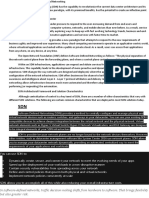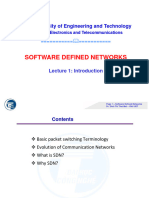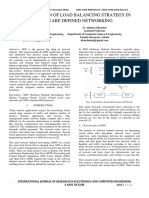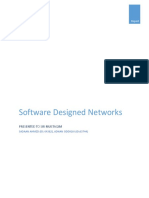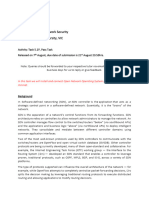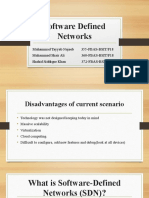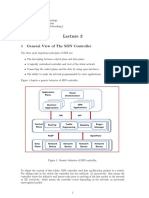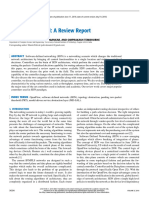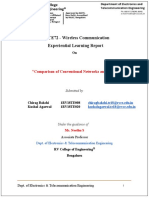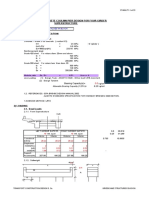0% found this document useful (0 votes)
111 views57 pagesLecture Notes 5 SDN Challenges and Scalability - DTTMai
This document discusses challenges and scalability issues in software-defined networks (SDNs). It outlines deployment challenges like device heterogeneity and interfacing with legacy systems. Infrastructure research challenges include improving network abstractions, programming models, and security. Scalability issues arise from the speed difference between the control and data planes. Solutions proposed to address scalability include distributed controllers, hierarchical control planes, and offloading control functions to switches.
Uploaded by
20021595 Nguyễn Minh TuấnCopyright
© © All Rights Reserved
We take content rights seriously. If you suspect this is your content, claim it here.
Available Formats
Download as PDF, TXT or read online on Scribd
0% found this document useful (0 votes)
111 views57 pagesLecture Notes 5 SDN Challenges and Scalability - DTTMai
This document discusses challenges and scalability issues in software-defined networks (SDNs). It outlines deployment challenges like device heterogeneity and interfacing with legacy systems. Infrastructure research challenges include improving network abstractions, programming models, and security. Scalability issues arise from the speed difference between the control and data planes. Solutions proposed to address scalability include distributed controllers, hierarchical control planes, and offloading control functions to switches.
Uploaded by
20021595 Nguyễn Minh TuấnCopyright
© © All Rights Reserved
We take content rights seriously. If you suspect this is your content, claim it here.
Available Formats
Download as PDF, TXT or read online on Scribd
/ 57




